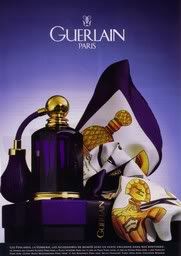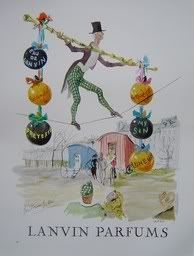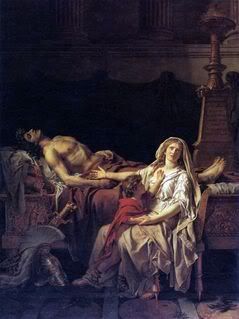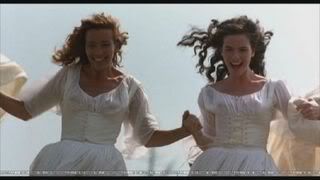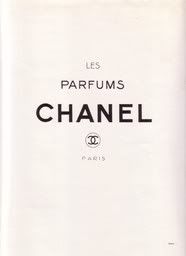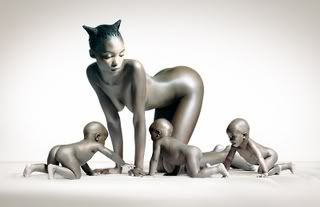When the old becomes new again we may be witnessing Gaudí's
"Sagrada Familia" or
"Le Tombeau de Couperin" by Ravel.
What I mean: it’s not necessarily a bad thing! Enter the re-orchastration of
Rumeur by the house of Lanvin which is both rather pretty and completely different than the somptuous vintage formula.
Jeanne Lanvin was originally a milliner that came to design clothes for her daughter and her friends’ daughters, establishing a salon that finally catered for adults just before World War I. Soon the salon became an entity of its own, continuing the tradition till today under the creative baguette of young designer Albert Elbaz.
It is however the perfume spectrum of Lanvin that has not survived that well over the years and that is assuredly a pity.
Jeanne Lanvin had a mysterious personage named Madame Zed (doesn’t she sound like a Graham Greene novel set in post-war Vienna?), an elderly Russian, creating perfumes for her, the last of which was the legendary
My Sin, a very successful triumph. After that it was André Fraysse who was hired as house perfumer in 1924, segueing on to create what was termed by another great nose (Edmond Roudnitska) “the most spectacular tetralogy in perfumery”:
Arpège in 1927,
Scandale in 1931,
Rumeur in 1932 and
Prétexte in 1937. Sadly, only
Arpège with its sonorous musical name still circulates on perfume counters today (after some adventures in formulaic changes, but happily restored to its original glory finally), as the world is fickle and tastes change, it seems. It might have to do with the fact that the perfume department of the house was sold to L’oréal conglomerate, too. (But you’d call me leftist if I insisted and I wouldn’t want you to do that). In any case,
Arpège saw a flanker on its tail in recent years,
éclat de Arpège, a pleasant, lilac -coloured, fruity floral that coincided with the latest olfactory trends, but bore no relation to the rich tradition of the house.
And then, just like that, last year saw the re-emergence of the old glory of
Rumeur. Or was it but a specter of its old self?
Certainly the new version bears no olfactory relation to the old one’s dark chypre trail of fruity nuances on a dark mossy bed of plush. Those were times when such things were appreciated. By today’s standards and due to the eclipse of oakmoss from perfume formulae the vintage
Rumeur is intoxicating and very perfumey; although by no means unwearable or outdated. Still, the house needed a new perfume to boost its re-vamped image and the difficulty of obtaining rights for use of a new name, not to mention the brainstorming needed for the inspiration of a successful one, were stumbling blocks that eased the acceptance of an older name being stuck on a new product. This dampens our hopes of them ever re-issuing their older treasure, like for instance Guerlain did with their
Sous le Vent, but rather continue on that path that Piguet led with
Baghari. However, much like
Baghari, the result in
Rumeur’s case is not disappointing.
Conceived by Francis Kurkdjian , the talented perfumer who is responsible for among others
Narciso for Her,
Rose Barbare for the Guerlain art et matiere line, and
Eau Noire for Dior, it has his familiar style of silky elegance that can never become cloying or childish. Retaining the mere sketch of a chypre composition as most new
“pink chypres” do (the term was brilliantly coined by Ayala Moriel to denote the new chypres that lack an oakmoss base) it has the abstract powdery floral feel I have come to expect of this exciting new category of perfumes that come to the rescue after the avalanche of too many fruity florals and teeny bobber vanillic candysticks. It’s a welcome change and a subtly sensual trend I am quite willing to follow.
The new
Rumeur begins on a subtle and fresh plane of aldehydes that support the exquisite florancy of pretty seringa, the family of which lilac is an offspring, and of quiet soft-petaled magnolia, like transparent veils of a white material on a soft feminine body illuminated by the afternoon sun. If you have been enamoured with the discreet sexiness of
Narciso for Her especially in its superior eau de toilette version like I have, then you are sure to appreciate the loveliness such an effect produces in the new
Rumeur. Although patchouli is listed in both scents you would be hard pressed to discern it as the whole effect is of a very sensual but abstract aroma that is hard to pinpoint.
There is subtle muskiness and sweetness that whispers come hither in a way that does not entirely do away with romantic sensibilities of yore. It culminates in a panorama of woody notes enriched with the depth of ambroxan lending projection and decent lasting power on skin and clothes.
On the whole, picture it as a silky rosy
robe de chambre ready to shed its modesty with one fell sweep of the cute ribbon that anchors it to a supple waist and you’re there.
The bottle is quite pleasant to look at, a bit like the shape of
Promesse by Cacharel, with a matte golden ring on the cap, from which I don’t advise you to hold it like the perversely smokey eyed and modernly coiffed model does in the printed advertisements. In my opinion there is a discrepancy between advertising image and actual scent in this one as the no doubt innovative clothes of the model do not reflect the prettiness and romanticism of the perfumed result. However in an aggressive society which reflects in the sexual arena as well, it is the visual rather than the olfactual that is predatory and mean. Happily the new
Rumeur is neither.
Official notes for the reissued Rumeur by Lanvin: magnolia, white roses, jasmine sambac, seringa, orange blossom, lily of the valley, patchouli, musks, ambroxan.
Available from major department stores.
Top pic courtesy of cofe.ru, "My sin" ad from okadi, new ad for Rumeur from escentual.
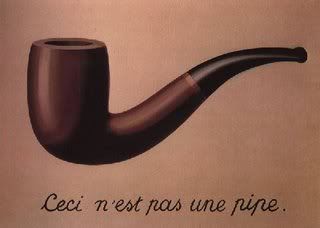
.jpg)
